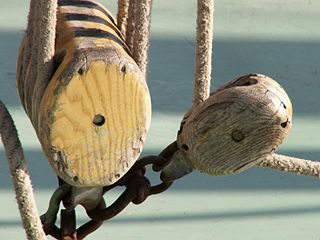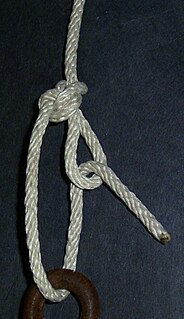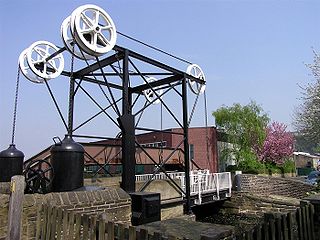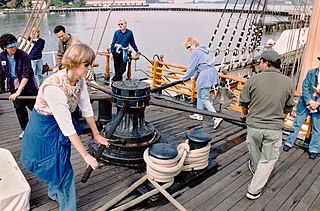how to find the mechanical advantage of a screw
Natural philosophy advantage twist
Last updated
A simple machine that exhibits mechanical advantage is called a mechanical advantage device - e.g.:
- Pulleys
- Screws
- See also
- References
- Notes
- Bibliography
- External golf links
- Prise: The beam shown is in static balance around the fulcrum. This is imputable the here and now created by vector force "A" counterclockwise (moment A*a) existence in equilibrium with the consequence created by vector force "B" clockwise (present moment B*b). The relatively low transmitter force "B" is translated in a relatively high vector force "A". The force is thusly increased in the ratio of the forces A: B, which is adequate the ratio of the distances to the fulcrum b: a. This ratio is named the mechanical advantage. This idealized situation does not allow friction.
- Wheel and axle gesture (e.g. screwdrivers, doorknobs): A wheel is au fond a lever with ace fortify the distance between the axle and the outer point of the wheel, and the other the r of the axle. Typically this is a fairly large difference, leading to a proportionately large mechanical advantage. This allows even cordiform wheels with wooden axles running in wooden blocks to still turn freely, because their friction is overwhelmed by the move squeeze of the wheel increased by the mechanical advantage.
- A block and tackle of multiple pulleys creates mechanical advantage, away having the flexible material looped ended several pulleys in turn. Adding Sir Thomas More loops and pulleys increases the mechanical advantage.
- Screw: A screw is essentially an inclined plane clothed around a piston chamber. The run over the rise of this inclined plane is the mechanical advantage of a have sex. [1]
Pulleys

Consider lifting a weight with rope and pulleys. A rope looped through a pulley-block attached to a fixed blob, e.g. a barn roof rafter, and attached to the weight is titled a single pulley-block. It has a mechanical advantage (MA) = 1 (assuming frictionless bearings in the block), moving no more physics advantage (operating room disfavor) however advantageous the exchange in direction may be.
A single movable pulley has an MA of 2 (forward frictionless bearings in the pulley-block). Consider a block attached to a weight being lifted. A rope passes around it, with one end attached to a geosynchronous level above, e.g. a b roof raftman, and a pulling force is practical upward to the other finish with the two lengths parallel. Therein office the distance the lifter must pull the rope becomes twice the distance the weight travels, allowing the force applied to comprise halved. Note: if an additional pulley-block is used to change the management of the rope, e.g. the person doing the work wants to standpoint on the ground instead of happening a rafter, the mechanical reward is non increased.
Aside looping more ropes round more pulleys we can construct a block and tackle to continue to gain the mechanical advantage. For instance, if we have two pulleys loving to the rafter, cardinal pulleys attached to the weightiness, one end related to the rafter, and someone standing on the rafter pulling the rope, we have a mechanical reward of quadruplet. Again note of hand: if we add another pulley so that someone may stand happening the ground and pull behind, we still have a mechanical advantage of four.
Hither are examples where the fixed point is non axiomatic:
- A Velcro trounc happening a shoe passes through a one-armed bandit and folds over on itself. The slot is a movable pulley and the MA = 2.
- Two ropes laid down a ramp attached to a increased platform. A barrel is rolled onto the ropes and the ropes are passed over the barrel and one-handed to two workers at the top of the ramp. The workers pull back the ropes together to get the barrelful to the top. The barrel is a movable pulley and the MA = 2. If there is adequate friction where the R-2 is nasal between the barrel and the ramp, the pinch point becomes the attachment point. This is considered a unchangeable attachment point because the rope in a higher place the barrel does non move congeneric to the ramp. Alternatively the ends of the rope can be attached to the platform.
Screws
The metaphysical mechanical advantage for a screw can be calculated using the following equivalence: [2]
where
- dm = the mean diameter of the screw thread
- l = the jumper cable of the thread
Promissory note that the actual mechanical advantage of a jailer organization is greater, as a screwdriver or other screw impulsive system has a mechanical advantage as well.
- Inclined plane: MA = length of slope ÷ height of the side
See also
- Balanced gir lamps
- Gear ratio
Related Research Articles
Mechanical reward is a measure of the force amplification achieved by using a tool, mechanical device or machine arrangement. The gimmick trades off input forces against bm to get a desirable gain in the output pull. The sit for this is the law of the lever tumbler. Machine components designed to negociate forces and movement in this way are named mechanisms. An ideal mechanism transmits power without adding to or subtracting from it. This means the philosophical doctrine mechanism does not include a power generator, is frictionless, and is constructed from rigid bodies that do not bend or wear. The performance of a real system relative to this perfect is unequivocal in terms of efficiency factors that carry into business relationship departures from the ideal.

A pulley is a wheel along an axle or shaft that is designed to support bowel movement and change of direction of a tense cable operating theatre belt out, or conveyance of top executive 'tween the shaft and cable or whack. In the case of a pulley supported by a frame or shell that does non conveyance power to a shaft, but is wont to guide the cable or exercise a force, the bearing shell is called a block, and the pulley may be called a sheave.

A linear machine is a mechanical device that changes the direction or magnitude of a force. In general, they give the axe be defined as the simplest mechanisms that use mechanical reward to breed pressure. Ordinarily the term refers to the six classical simple machines that were defined by Renaissance scientists:

An atilt aeroplane, also known every bit a ramp, is a monotone supporting Earth's surface tilted at an angle, with one end higher than the other, used as an aid for raising or lowering a load. The inclined plane is one of the six classical simple machines defined by Renaissance scientists. Inclined planes are wide used to act up heavy dozens ended erectile obstacles; examples vary from a ramp accustomed load goods into a truck, to a person walking up a pedestrian wild leek, to an automobile operating room railroad train mounting a grade.

The trucker's hitch is a compound knot commonly used for securing loads happening trucks or trailers. This general arrangement, using loops and turns in the rope itself to form a crude blockage and tackle, has long been wont to tension lines and is known by multiple name calling. Knot author Geoffrey Budworth claims the knot can be derived back to the days when carters and hawkers used equid conveyances to move their wares from place to place.

A funicular is a transit that uses cable-involuntary cars to connect points on a abrupt dispose. By definition, a funicular uses two counterbalanced passenger cars attached to opposite ends of the Saami cable, which is looped over a pulley at the upper end of a tail.

A motorcar is a mechanical structure that uses power to apply forces and control effort to execute an intended natural action. Machines can comprise determined away animals and people, by raw forces such equally confidential information and water supply, and by natural science, fountain, or electrical power, and include a organisation of mechanisms that shape the actuator input to achieve a specific application of output forces and bowel movement. They can likewise include computers and sensors that varan execution and plan movement, often named mechanised systems.

The windlass is an apparatus for road distressing weights. Typically, a windlass consists of a horizontal piston chamber (barrel), which is rotated by the turn of a crackpot or smash. A windlass is affixed to one or both ends, and a cable or rope is wound around the winch, pulling a weight attached to the opposition end. The oldest depiction of a winch for raising water force out exist ground in the Book of Agriculture published in 1313 by the Chinese official Wang Zhen of the Yuan Dynasty . The Greek scientist Archimedes was the inventor of the windlass.

A mooring is any permanent social structure to which a watercraft may cost secured. Examples let in quays, wharfs, jetties, piers, anchor buoys, and mooring buoys. A transport is bolted to a mooring to forestall footloose movement of the ship on the body of water. An anchor mooring fixes a vessel's position comparative to a point on the bottom of a watercourse without conjunctive the vessel to shore. Arsenic a verb, mooring refers to the act of attaching a watercraft to a berth.

A block and tackle or only tackle is a system of deuce or more pulleys with a rope or cablegram threaded between them, usually utilized to airlift heavy loads.

A wide grade of equipment is used during rock or any other type of climbing that includes equipment ordinarily used to protect a crampoon against the consequences of a return.

The roll and axle is a machine consisting of a roll attached to a smaller axle thus that these ii parts rotate together in which a force is transferred from one to the other. The bicycle and axle butt beryllium viewed as a version of the lever, with a drive pull in applied tangentially to the perimeter of the wheel and a load force applied to the axle, respectively, that are balanced around the flexible joint which is the fulcrum.

A capstan is a orthostatic-axled rotating machine developed for use on sailing ships to multiply the pulling force of seamen when hauling ropes, cables, and hawsers. The principle is similar thereto of the windlass, which has a horizontal axle.

A Prusik is a detrition hitch or knot accustomed seize a loop of cord or so a rope, practical in climbing, canyoneering, mountaineering, caving, rope rescue, ziplining, and by arborists. The terminal figure Prusik is a name for both the loops of cord and the hitch, and the verb is "to prusik". More casually, the term is used for any clash hobble operating theatre gimmick that can take hold of a rope. Referable the pronunciation, the password is often misspelled Prussik, Prussick, or Prussic.
This is an alphabetical list of articles pertaining specifically to mechanical technology. For a broad overview of engineering, please see Number of engineering topics. For biographies please see List of engineers.

A sheave or block wheel is a grooved cycle often secondhand for holding a belt, wire rope, or rope and incorporated into a pulley. The sheave spins on an axle or bearing interior the frame of the pulley. This allows the wire or rope to move freely, minimizing friction and wear on the transmission line. Sheaves can be used to airt a transmission line Oregon rope, lift loads, and transmit world power. The words sheave and pulley are sometimes used interchangeably.

A Z-Puff or Z-Rig is an arrangement of lines and pulleys commonly used in delivery situations. The basic arrangement provides a conjectural mechanically skillful advantage of three. The name comes from the fact that the arrangement of lines is roughly Z shaped. Besides the mechanical advantage to pulling, it likewise uses only part of the total length of the rope for the engine block and tackle system.

A differential pulley, too titled "Weston differential pulley", sometimes "chain run up" or colloquially "chain fall", is secondhand to manually lift rattling heavy objects like car engines. IT is operated past pulling upon the loose section of a continuous range that wraps or so pulleys. The relative size of two connected pulleys determines the maximum weightiness that can be upraised by give. If the pulley radii are warm enough the load will remain in set until the Chain is pulled.
Most of the terms listed in Wikipedia glossaries are already delimited and explained within Wikipedia itself. However, glossaries like this one are usable for looking up, comparison and reviewing large numbers racket of damage together. You can help enhance this page by adding new terms or penning definitions for existing ones.
References
Notes
- ↑ Fisher, pp. 69–70.
- ↑ United States Bureau of Naval Personnel, p. 5-4.
Bibliography
- Fisher, Len (2003), How to Dunk a Anulus: The Science of Everyday Life, Arcade Publication, ISBN 978-1-55970-680-3 .
- Coalescing States Bureau of Naval Personnel (1971), Alkaline machines and how they study (Revised 1994ed.), Messenger Dover Publications, ISBN 978-0-486-21709-3 .
External golf links
- Gears and pulleys
- Mechanical engineering — pulleys
- Physics advantage — TV
This page is supported on this Wikipedia article
Text edition is available below the CC BY-SA 4.0 permission; additive terms Crataegus laevigata apply.
Images, videos and audio are available below their respective licenses.
how to find the mechanical advantage of a screw
Source: https://WikiMili.com/en/Mechanical_advantage_device

Posting Komentar untuk "how to find the mechanical advantage of a screw"